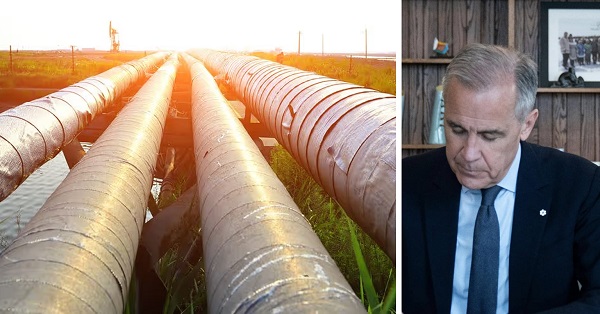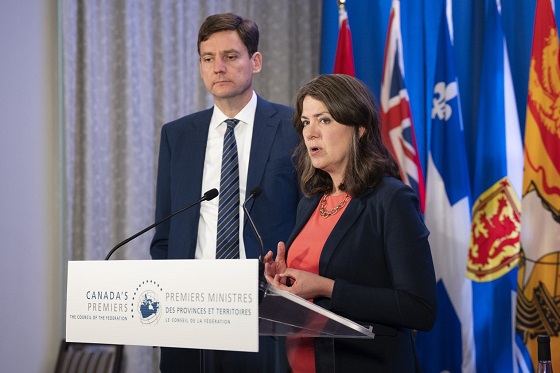Business
CBC staff with six figure salaries balloons under Trudeau government
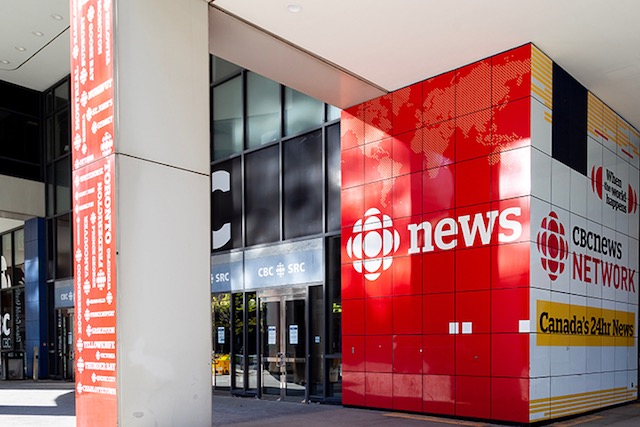
From the Canadian Taxpayers Federation
Author: Ryan Thorpe
The number of Canadian Broadcasting Corporation staff taking home a six-figure annual salary has soared by 231 per cent under Prime Minister Justin Trudeau.
Last year, 1,450 CBC staff took home more than $100,000 in base salary, according to access-to-information records obtained by the Canadian Taxpayers Federation.
That’s a 231 per cent increase over 2015, when just 438 CBC employees took home a six-figure annual salary.
Six-figure salaries at the state broadcaster cost taxpayers more than $181 million last year, for an average of $125,000 for those employees.
“The CBC has been raking in big paycheques and bonuses while the taxpayers footing the bills have been struggling,” said Franco Terrazzano, CTF Federal Director. “Is anyone in government going to step in, stick up for taxpayers and put an end to the CBC gravy train?”
The CBC also dished out more than $11.5 million in pay raises last year to 87 per cent of its workforce, according to separate access-to-information records.
No CBC employee received a pay cut in 2023.
All told, raises at the CBC total $97 million since 2015.
This week, the Canadian Press reported the CBC paid out $18.4 million in bonuses in 2024, after it eliminated hundreds of jobs.
That included $3.3 million in bonuses for 45 executives, for an average of $73,000 each – more than the average salary for Canadian workers, according to Statistics Canada.
The bonuses also included $10.4 million paid out to 631 managers and $4.6 million for 518 other employees.
Bonuses at the CBC now total $132 million since 2015. Combined, raises and bonuses at the CBC total more than $229 million and counting since 2015.
“It’s time to end these taxpayer-funded bonuses and defund the CBC,” Terrazzano said.
|
Year |
Raise |
Bonus |
Combined Cost |
|
2015 |
$7,958,060 |
$8,254,599 |
$16,212,569 |
|
2016 |
$8,187,668 |
$8,097,155 |
$16,284,823 |
|
2017 |
$10,134,964 |
$8,903,882 |
$19,038,846 |
|
2018 |
$14,544,563 |
$13,337,262 |
$27,881,825 |
|
2019 |
$11,048,543 |
$14,257,933 |
$25,306,476 |
|
2020 |
$11,989,307 |
$15,013,838 |
$27,003,145 |
|
2021 |
$9,218,379 |
$15,398,101 |
$24,616,480 |
|
2022 |
$12,505,938 |
$16,052,148 |
$28,558,086 |
|
2023 |
$11,528,793 |
$14,902,755 |
$26,431,548 |
|
2024 |
N/A |
$18,400,000 |
$18,400,000 |
|
Total |
$97,116,215 |
$132,617,673 |
$229,733,888 |
The CBC News Network’s share of the national prime-time viewing audience is 2.1 per cent, according to its latest third-quarter report.
Put another way, 97.9 per cent of TV-viewing Canadians choose not to watch CBC’s English language prime-time news program.
Nevertheless, the state broadcaster considers this a success, claiming CBC News Network “continues to track above” its target of 1.7 per cent, “driven by major news stories drawing large audiences.”
In 2018, the CBC’s share of the national prime-time viewing audience was 7.6 per cent. That means in six years, CBC News Network’s share has plummeted by 72 per cent.
The CBC will take more than $1.4 billion from taxpayers in 2024-25.
That’s enough money to pay the annual grocery bill for roughly 86,000 Canadian families of four.
Alberta
Emissions Reduction Alberta offering financial boost for the next transformative drilling idea
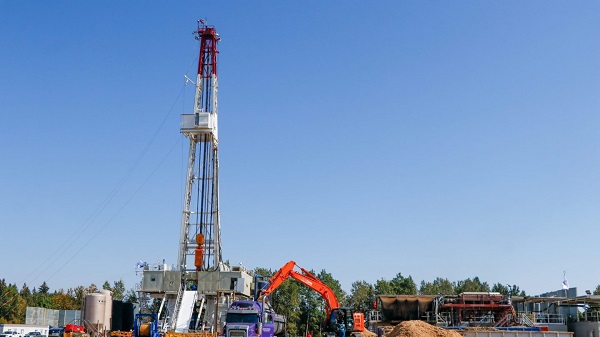
From the Canadian Energy Centre
$35-million Alberta challenge targets next-gen drilling opportunities
‘All transformative ideas are really eligible’
Forget the old image of a straight vertical oil and gas well.
In Western Canada, engineers now steer wells for kilometres underground with remarkable precision, tapping vast energy resources from a single spot on the surface.
The sector is continually evolving as operators pursue next-generation drilling technologies that lower costs while opening new opportunities and reducing environmental impacts.
But many promising innovations never reach the market because of high development costs and limited opportunities for real-world testing, according to Emissions Reduction Alberta (ERA).
That’s why ERA is launching the Drilling Technology Challenge, which will invest up to $35 million to advance new drilling and subsurface technologies.
“The focus isn’t just on drilling, it’s about building our future economy, helping reduce emissions, creating new industries and making sure we remain a responsible leader in energy development for decades to come,” said ERA CEO Justin Riemer.
And it’s not just about oil and gas. ERA says emerging technologies can unlock new resource opportunities such as geothermal energy, deep geological CO₂ storage and critical minerals extraction.
“Alberta’s wealth comes from our natural resources, most of which are extracted through drilling and other subsurface technologies,” said Gurpreet Lail, CEO of Enserva, which represents energy service companies.
ERA funding for the challenge will range from $250,000 to $8 million per project.
Eligible technologies include advanced drilling systems, downhole tools and sensors; AI-enabled automation and optimization; low-impact rigs and fluids; geothermal and critical mineral drilling applications; and supporting infrastructure like mobile labs and simulation platforms.
“All transformative ideas are really eligible for this call,” Riemer said, noting that AI-based technologies are likely to play a growing role.
“I think what we’re seeing is that the wells of the future are going to be guided by smart sensors and real-time data. You’re going to have a lot of AI-driven controls that help operators make instant decisions and avoid problems.”
Applications for the Drilling Technology Challenge close January 29, 2026.
armed forces
Global Military Industrial Complex Has Never Had It So Good, New Report Finds


From the Daily Caller News Foundation
The global war business scored record revenues in 2024 amid multiple protracted proxy conflicts across the world, according to a new industry analysis released on Monday.
The top 100 arms manufacturers in the world raked in $679 billion in revenue in 2024, up 5.9% from the year prior, according to a new Stockholm International Peace Research Institute (SIPRI) study. The figure marks the highest ever revenue for manufacturers recorded by SIPRI as the group credits major conflicts for supplying the large appetite for arms around the world.
“The rise in the total arms revenues of the Top 100 in 2024 was mostly due to overall increases in the arms revenues of companies based in Europe and the United States,” SIPRI said in their report. “There were year-on-year increases in all the geographical areas covered by the ranking apart from Asia and Oceania, which saw a slight decrease, largely as a result of a notable drop in the total arms revenues of Chinese companies.”
Notably, Chinese arms manufacturers saw a large drop in reported revenues, declining 10% from 2023 to 2024, according to SIPRI. Just off China’s shores, Japan’s arms industry saw the largest single year-over-year increase in revenue of all regions measured, jumping 40% from 2023 to 2024.
American companies dominate the top of the list, which measures individual companies’ revenue, with Lockheed Martin taking the top spot with $64,650,000,000 of arms revenue in 2024, according to the report. Raytheon Technologies, Northrop Grumman and BAE Systems follow shortly after in revenue,
The Czechoslovak Group recorded the single largest jump in year-on-year revenue from 2023 to 2024, increasing its haul by 193%, according to SIPRI. The increase is largely driven by their crucial role in supplying arms and ammunition to Ukraine.
The Pentagon contracted one of the group’s subsidiaries in August to build a new ammo plant in the U.S. to replenish artillery shell stockpiles drained by U.S. aid to Ukraine.
“In 2024 the growing demand for military equipment around the world, primarily linked to rising geopolitical tensions, accelerated the increase in total Top 100 arms revenues seen in 2023,” the report reads. “More than three quarters of companies in the Top 100 (77 companies) increased their arms revenues in 2024, with 42 reporting at least double-digit percentage growth.”
-

 Energy1 day ago
Energy1 day agoCanadians will soon be versed in massive West Coast LPG mega-project
-
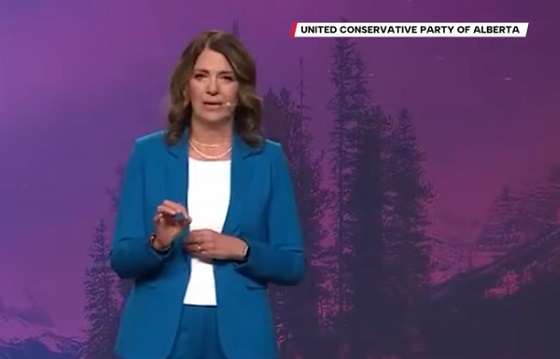
 Alberta1 day ago
Alberta1 day agoKeynote address of Premier Danielle Smith at 2025 UCP AGM
-

 Alberta2 days ago
Alberta2 days agoNet Zero goal is a fundamental flaw in the Ottawa-Alberta MOU
-

 Food2 days ago
Food2 days agoCanada Still Serves Up Food Dyes The FDA Has Banned
-

 Addictions2 days ago
Addictions2 days agoManitoba Is Doubling Down On A Failed Drug Policy
-

 National2 days ago
National2 days agoEco-radical Canadian Cabinet minister resigns after oil deal approved
-

 COVID-192 days ago
COVID-192 days agoFDA says COVID shots ‘killed’ at least 10 children, promises new vaccine safeguards
-

 Daily Caller1 day ago
Daily Caller1 day agoTom Homan Predicts Deportation Of Most Third World Migrants Over Risks From Screening Docs


